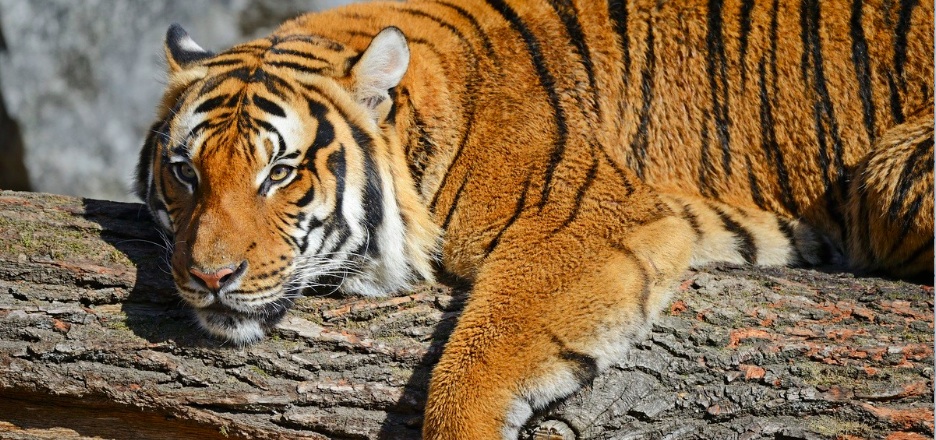
The Indochinese tiger is one of the six remaining tiger sub-species and lives primarily in inaccessible mountain forests and border regions of Thailand, Myanmar, South china, Cambodia, Laos and Vietnam. Advancing destruction of tiger habitat, and human population growth in Southeast Asia are threatening the rare big cat. At the same time, with appropriate measures the Indochinese tiger has good chances to survive here: the impassability of the terrain, past wars and the partially problematic political situation in individual countries impede human access to tiger refuges. As a result, these tigers have survived until today.
Knowledge of this sub-species is very limited, and there are only gross estimates of their numbers. Scientists estimate that only about 196 Indochinese tigers exist and that their numbers will decrease if protective measures are not taken. The extended period of war in the region where Indochinese tigers roam significantly decimated their presence. Tigers were then hunted for their bones and pelts and either sold or traded for weapons. Additionally, soldiers also consumed the meat of tiger prey such as deer, muntjaks and wild boars so that the big cats were left with little food. At the same time, the habitat remained relatively intact. The outlook for saving this subspecies is truly promising because tigers raise enough young, so that with appropriate protective measures their population can be grown within a short amount of time.
Additionally, the Indochinese tiger is uniquely threatened by hunting for trade because sustained demand for tiger products in traditional Asian medicine poaching and illegal trade in tiger parts remains lucrative – despite increase risk from stronger control measures.
The southwestern and northeastern dry forests in Cambodia are known as the most important and valuable tiger habitats in the region. Here, as in northern Laos, Thailand and northern Vietnam, the WWF is engaged with other governmental and nongovernmental organizations as part of the “Greater Mekong” Project for tiger protection. The approach to protecting tigers is primarily linked to a sustainable development of the region. Subsequently, the Indochinese tiger and its habitat can only be protected over the long term, when the ever-expanding human population can find livelihoods as an alternative to poaching and deforestation.
Source: WWF Artenlexikon
